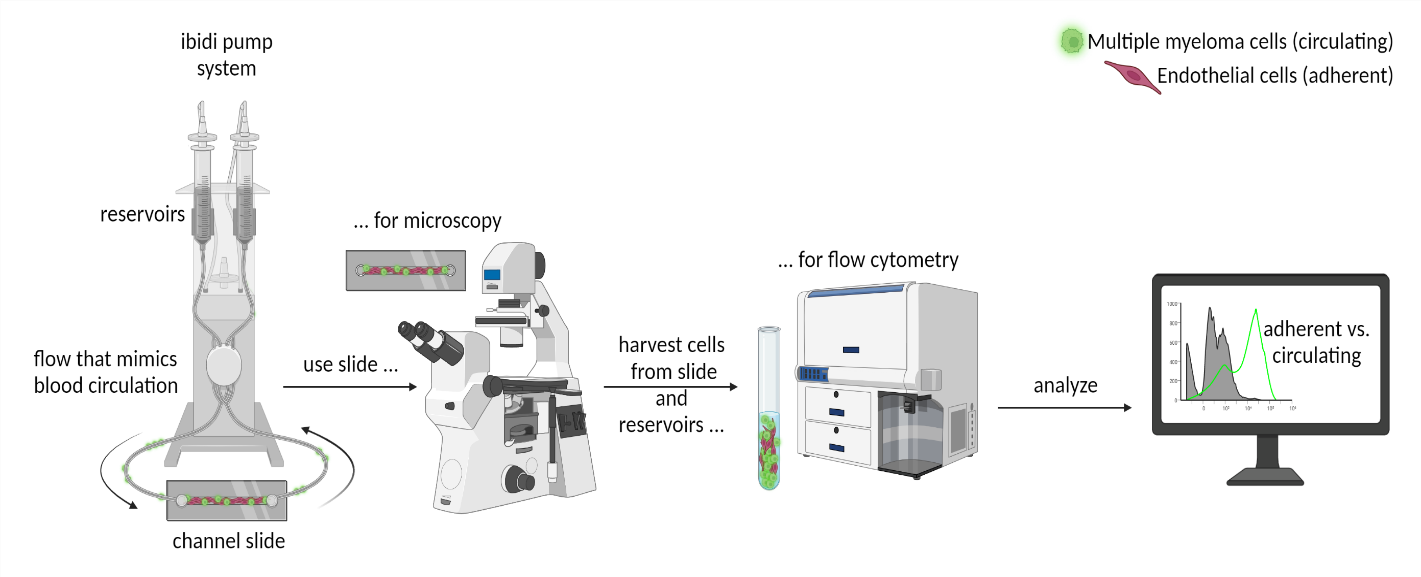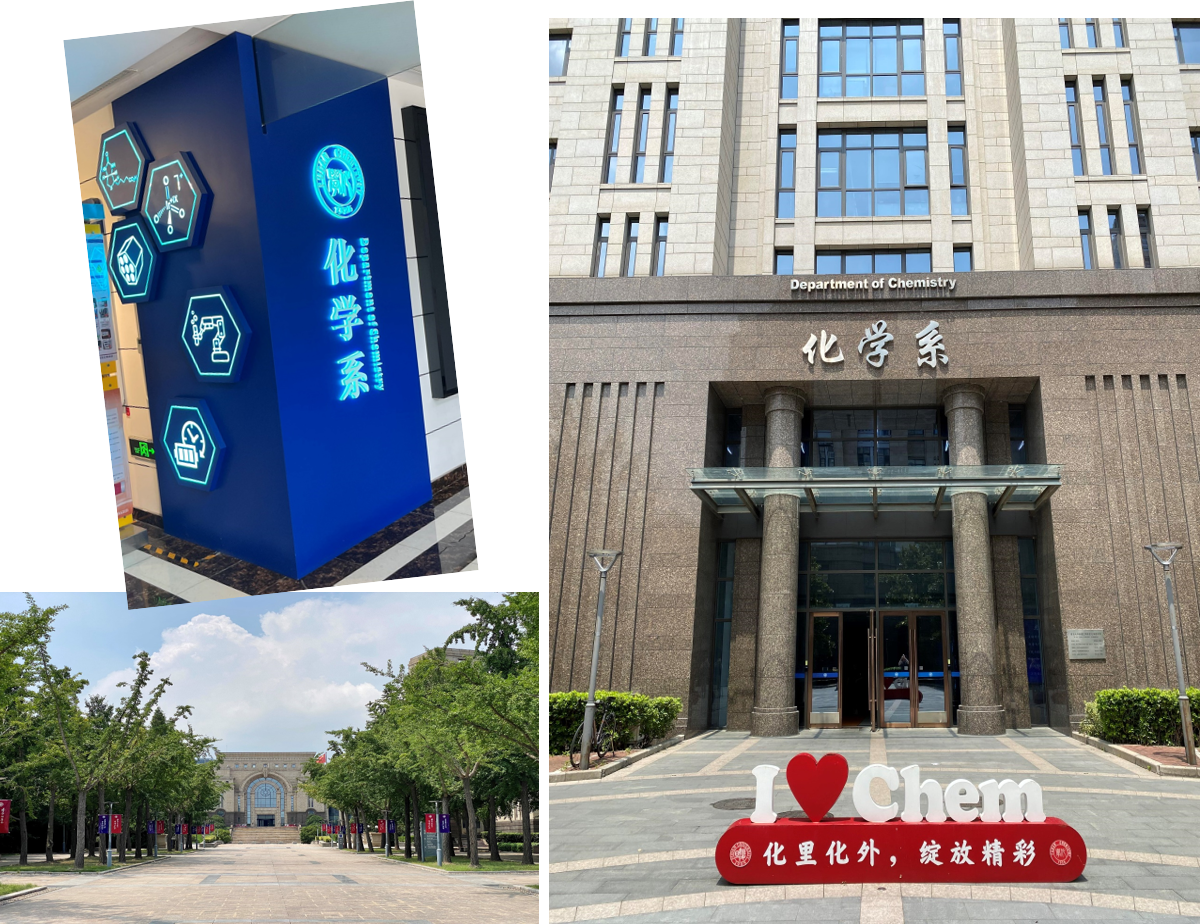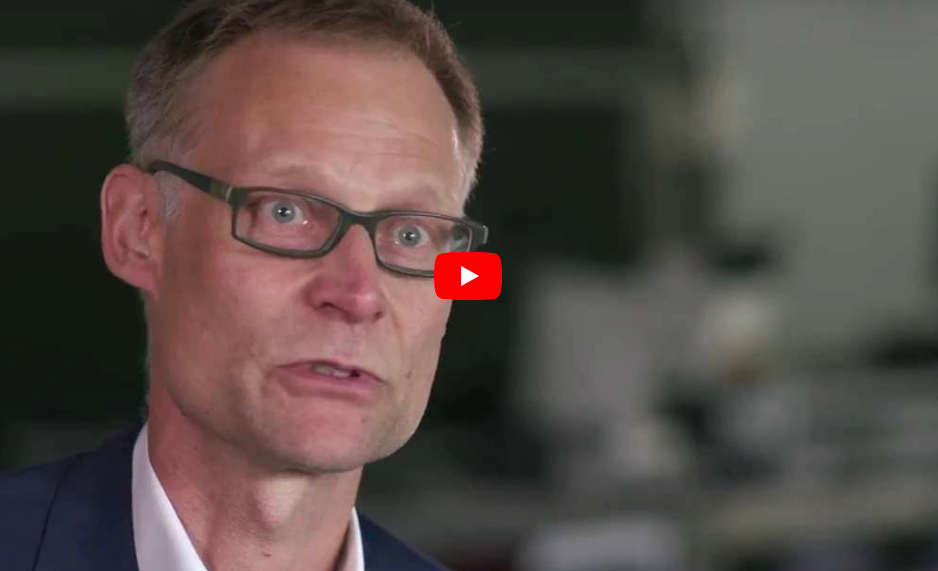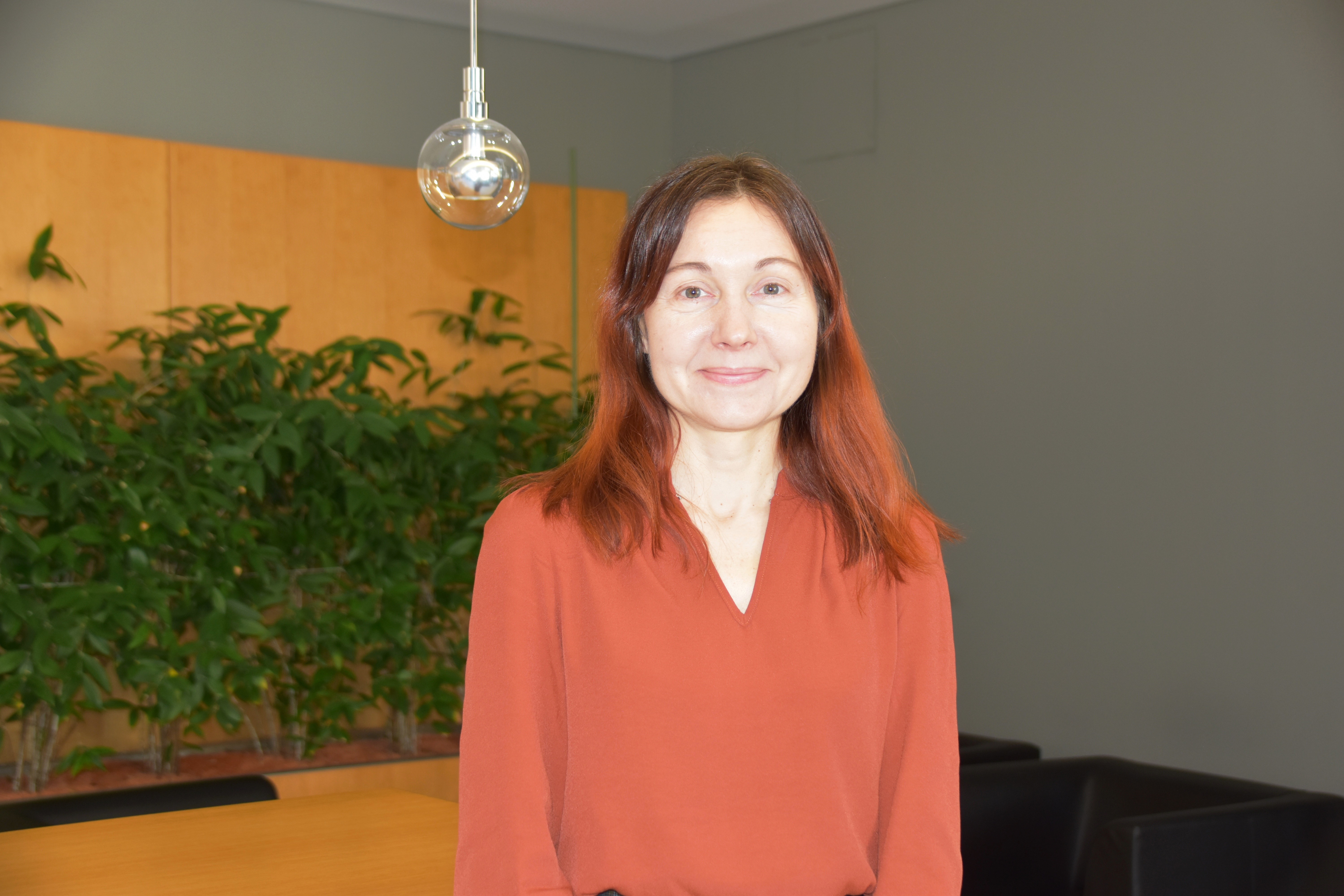We are focusing on the disease of Multiple Myeloma (MM), the most common form of bone marrow (BM) cancer in the US and Europe. This cancer is characterized by the initial proliferation of malignant antibody-producing plasma cells within the BM followed by intermediate-/late-stage-specific metastasizing events predominantly to other bone marrow compartments. Despite intensive research and the development of new active therapeutic agents and substances, the disease remains incurable to this day and has the lowest 5-year survival rate (approx. 40%) of the three most common leukemias. One of the greatest challenges for current therapeutic measures is the spread (metastasis/dissemination) of multiple tumor cell clones within different BM compartments.
The initial process of tumor dissemination is characterized by mobilization of the malignant cells and their successful entry into the bloodstream (transendothelial migration).
In our preliminary work, we showed that, a protein from the family of junctional adhesion molecules (JAM), namely JAM-C, plays an important role in the interaction of MM cells with cells from the BM niche and the vasculature.
Firstly, we focused predominantly on the MM cells and analyzed the dynamic expression of this molecule. We were able to show that a blockade of JAM-C led to an overall amelioration of the disease progression as well as a significantly decreased dissemination rate in a syngeneic mouse model.
Since there are always two sides of the medal, we are now focusing on alterations regarding surface molecule expression patterns on one counterpart, namely the endothelial cells (EC), from MM BM and compare these profiles with EC from healthy individuals. Aim of this approach is to elucidate the role of differentially expressed surface/adhesion molecules on the MM-EC regarding the dissemination process.
With this we hope to proof that most “gold medals are also on the ‘downside’ made of gold”.

One main experimental setup to verify the participation of the mentioned molecules in the migration process is based on an unidirectional pump system that offers the possibility of (long-term) cultivation of cell lines as well as valuable and unique primary cells. Additionally, it facilitates the preclinical testing of active substances on rare and sensitive primary cell material under nearly physiological conditions.
[Andreas Brandl, Universität Würzburg]



